Taj Mahal: A Love Story in Marble
The Taj Mahal, the magnificent marble marvel nestled in the heart of India, is more than just an architectural wonder.
It symbolizes eternal love, a testament to the enduring bond between Emperor Shah Jahan and his beloved wife, Mumtaz Mahal.
This iconic monument has captured the imagination of millions across the globe, drawing them into its romantic tale of passion and devotion.
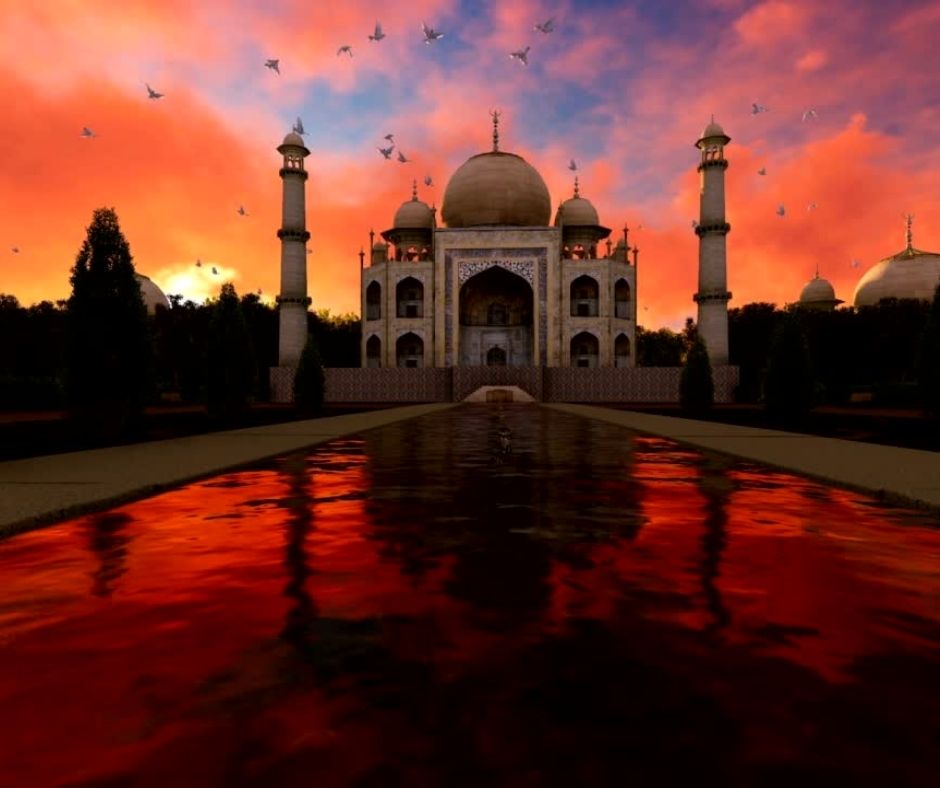
The Legend of Taj Mahal Begins
The story of the Taj Mahal dates back to the 17th century during the Mughal Empire in India.
Emperor Shah Jahan, deeply enamored by his wife Mumtaz Mahal, commissioned the construction of this grand mausoleum after her untimely death during childbirth.
Legend has it that Shah Jahan was grief-stricken by Mumtaz’s demise, and he vowed to honor her memory with a monument that would stand the test of time.
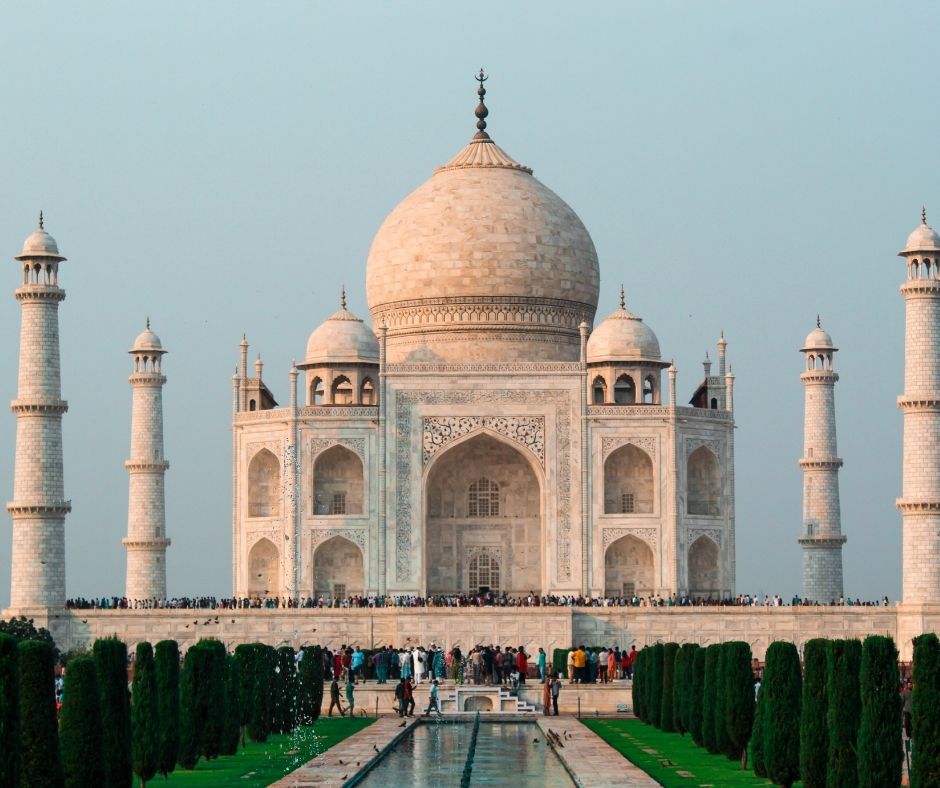
Architectural Marvel in Marble
Designed by renowned architects from across the empire, the Taj Mahal stands as a masterpiece of Mughal architecture.
Constructed primarily with white marble sourced from Rajasthan and adorned with intricate inlays of semi-precious stones, the monument exudes elegance and grandeur.
Its symmetrical layout, intricate carvings, and elaborate gardens showcase the exceptional craftsmanship of the artisans of that era.
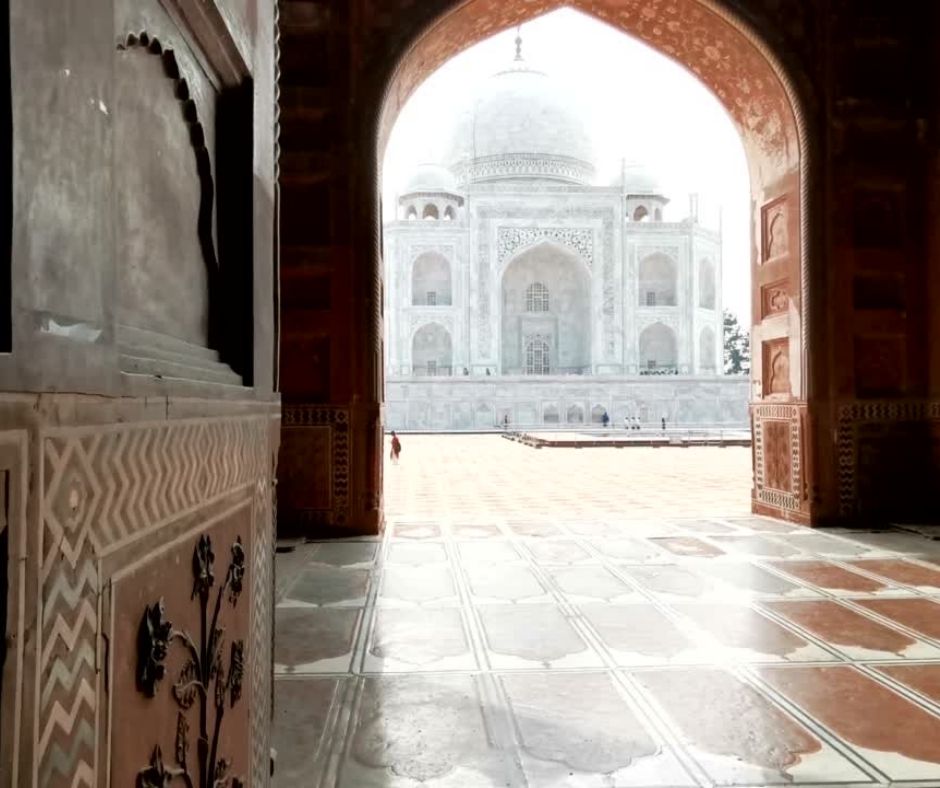
Symbolism of Love and Devotion
Taj Mahal is more than just a mausoleum; it symbolizes Shah Jahan’s and Mumtaz Mahal’s profound love. Every aspect of its design, from the symmetry of the architecture to the intricate details of the marble work, reflects the depth of their bond.
The central dome, flanked by four minarets, represents the throne of the Heavens where Mumtaz’s soul is believed to reside for eternity.
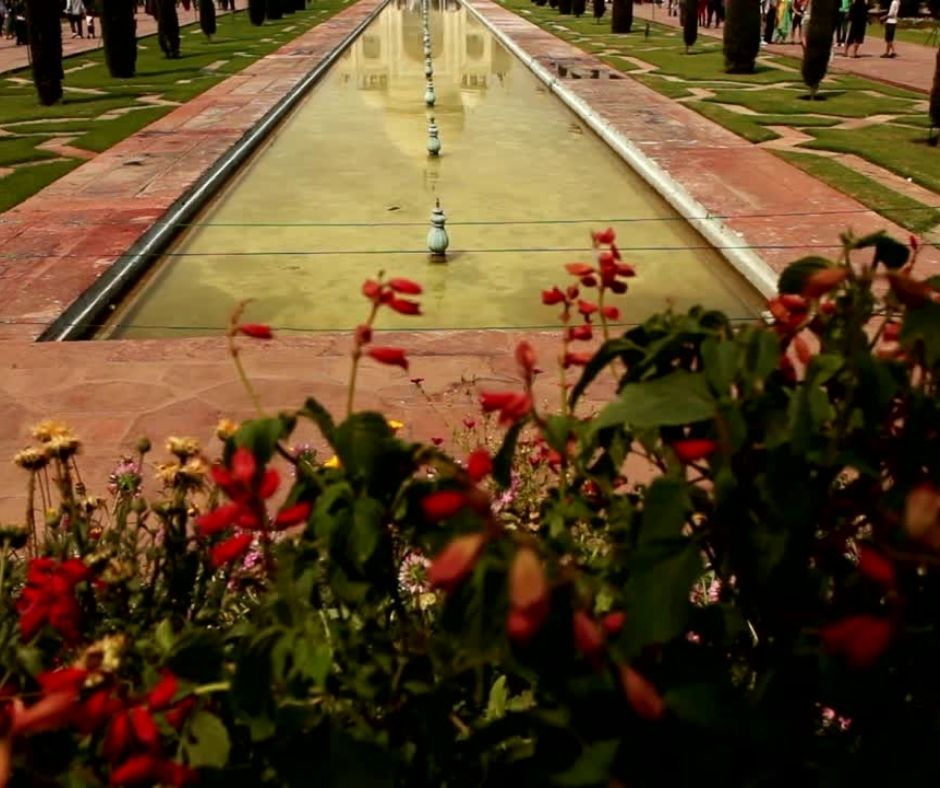
Sunset Glow and Moonlit Nights
The beauty of the Taj Mahal transcends time, captivating visitors with its ethereal charm during different times of the day. At sunrise, the monument gleams with a golden hue, while at sunset, it basks in the warm glow of the evening sky. As night falls, the Taj Mahal transforms into a vision of enchantment, bathed in the soft light of the moon, casting a spellbinding reflection in the nearby Yamuna River.
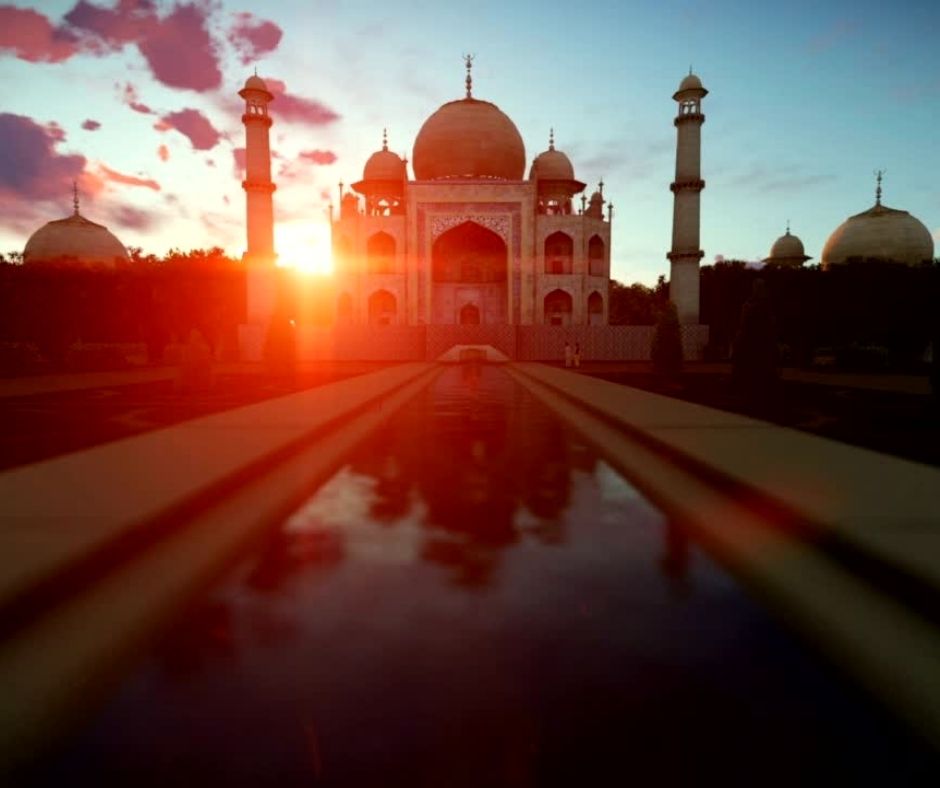
Intriguing Architectural Symmetry
One of the most striking features of the Taj Mahal is its architectural symmetry, meticulously crafted to perfection.
The main building, along with the surrounding structures and gardens, is perfectly aligned along the north-south axis.
This symmetrical design enhances the monument’s aesthetic appeal and reflects the harmony and balance inherent in Shah Jahan and Mumtaz’s relationship.
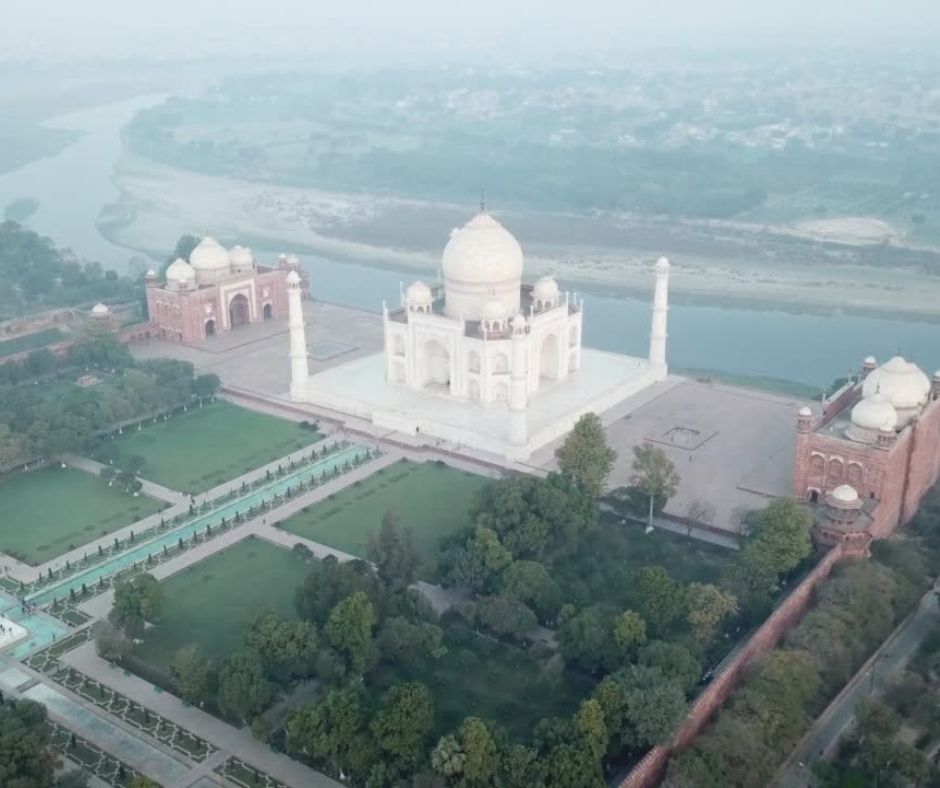
The Eternal Resting Place
While the Taj Mahal is renowned for its romantic allure, it also serves as the final resting place for Mumtaz Mahal and Shah Jahan himself.
Entombed beneath the central dome, their mortal remains lie side by side, united in death as they were in life.
This adds a poignant layer to the monument’s narrative, underscoring the enduring nature of love beyond the boundaries of time and mortality.
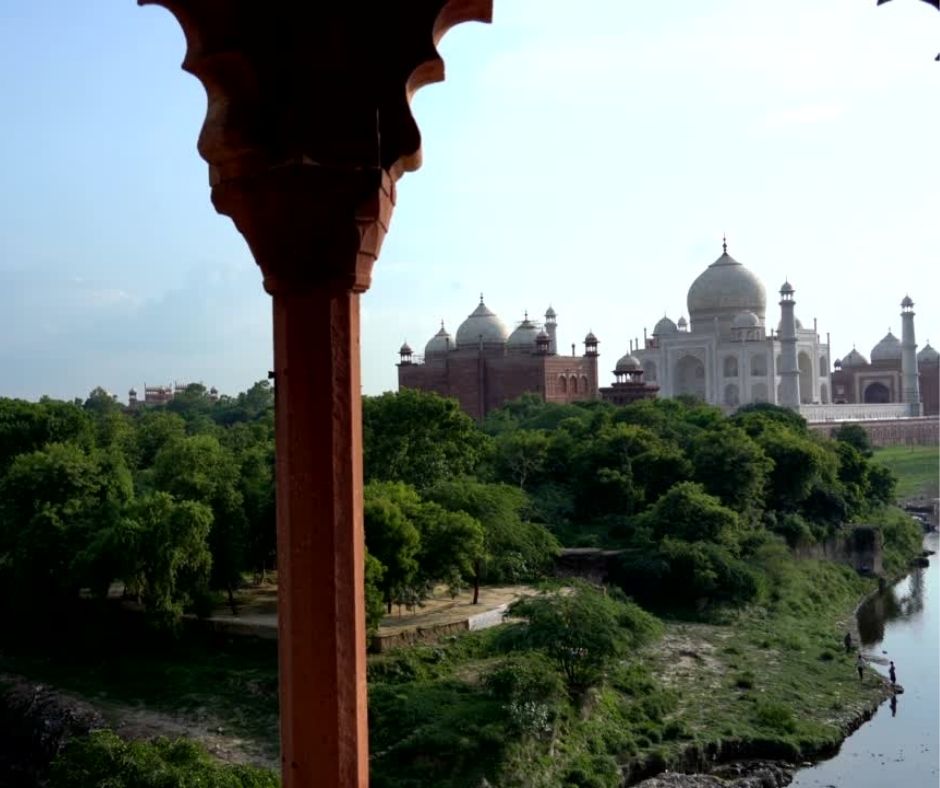
Cultural Heritage and UNESCO Recognition
Taj Mahal’s significance extends beyond its architectural splendor; it holds immense cultural and historical value for India and the world.
Recognizing its universal importance, UNESCO designated the Taj Mahal as a World Heritage Site in 1983, ensuring its preservation for future generations.
Visitors from all corners of the globe flock to this iconic monument, drawn by its timeless allure and rich cultural heritage.
Preservation Efforts and Challenges
Despite its enduring legacy, the Taj Mahal faces numerous challenges, including environmental degradation, pollution, and the effects of mass tourism. Conservation efforts are underway to mitigate these threats and ensure the monument’s longevity.
Strict regulations on visitor numbers, pollution control measures, and restoration projects are being implemented to safeguard the Taj Mahal for posterity.
Inspiring Artists and Poets
Over the centuries, the Taj Mahal has inspired countless artists, poets, and writers, who have sought to capture its sublime beauty and romantic essence.
From Rabindranath Tagore’s poetic verses to contemporary artists’ reinterpretations, the monument continues to spark creativity and imagination.
Its timeless appeal transcends cultural boundaries, leaving an indelible mark on the hearts and minds of all who encounter it.
A Timeless Tribute to Love
In a world fraught with turmoil and strife, the Taj Mahal stands as a beacon of love and unity, reminding us of the power of devotion and compassion.
Its enduring legacy serves as a timeless tribute to the boundless depths of human emotion and the enduring nature of true love.
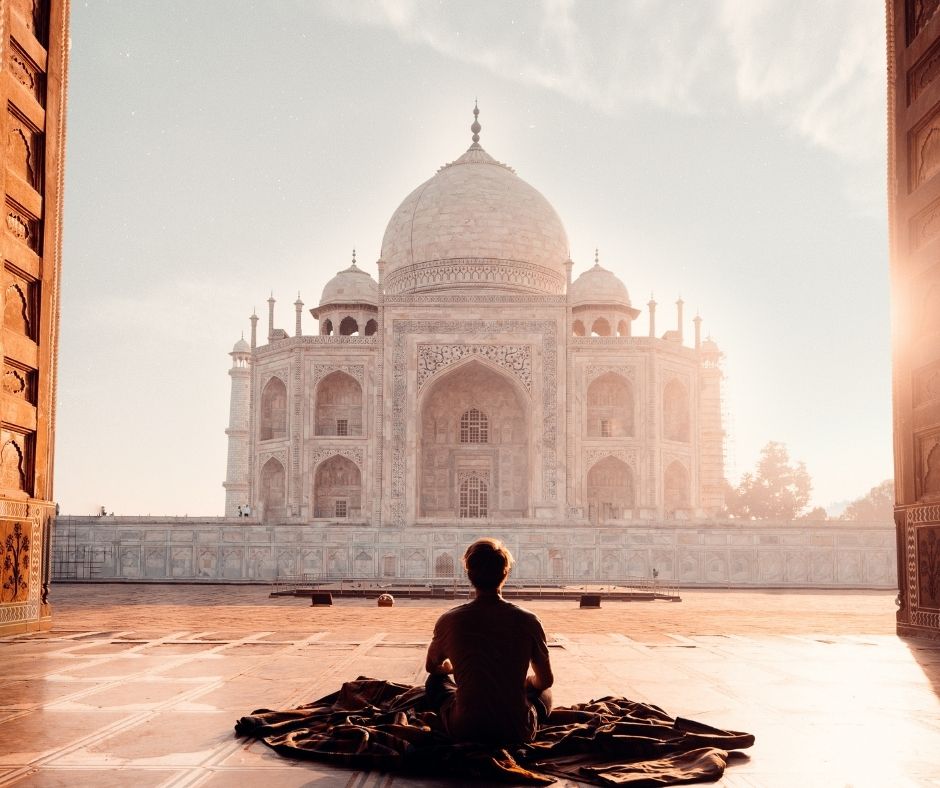
As visitors gaze upon its majestic silhouette, they are transported into the heart of a love story that transcends the confines of time and space, leaving an imprint that lasts a lifetime.
Conclusion:
Taj Mahal, with its mesmerizing beauty and poignant history, remains an eternal symbol of love and devotion. As it continues to stand the test of time, this iconic monument serves as a reminder of the enduring power of love to transcend boundaries and inspire generations to come.